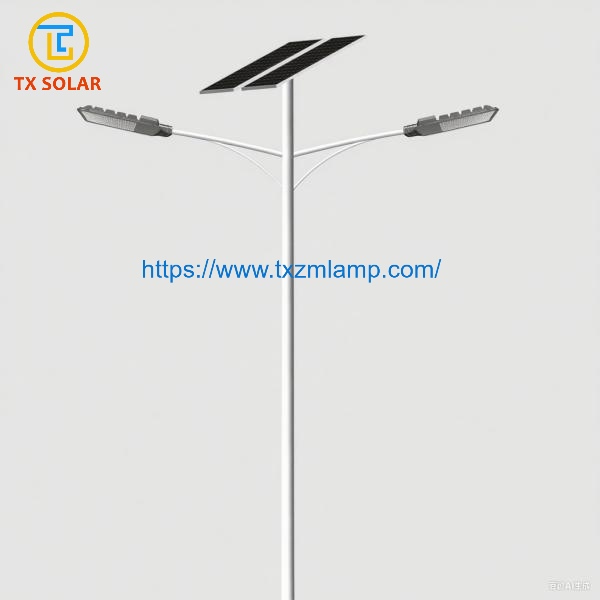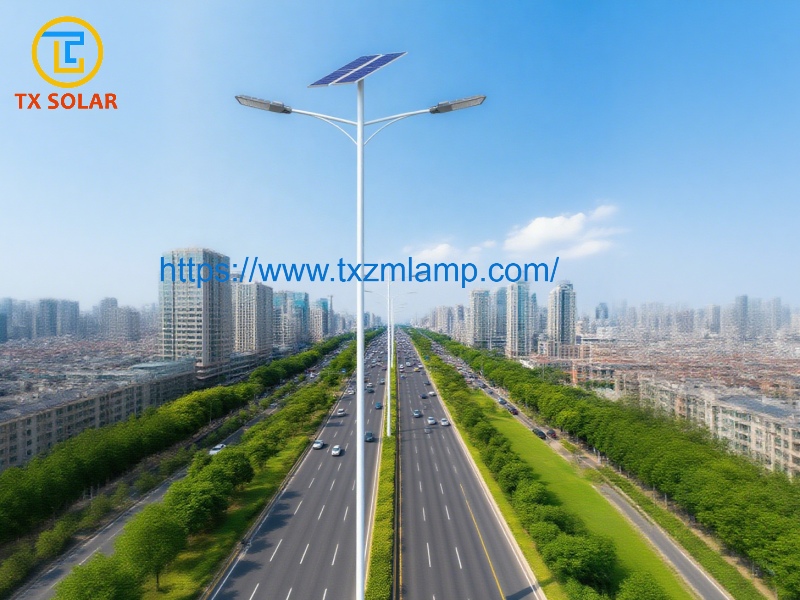Many people are unfamiliar with their voltage. There are numerous types of solar street lamps on the market, and the system voltages alone come in three varieties: 3.2V, 12V, and 24V. Many people struggle to choose between these three voltages. Today, solar street lamp manufacturer TIANXIANG conducts a comparative analysis to help you understand which is the best choice.

TIANXIANG is a 20-year-old factory that has been researching solar street lights. It has summarized some of its own experiences and insights. Let’s take a look.
From the efficient photovoltaic panels' light-energy conversion, to the long-lasting battery life, to the precise dimming of intelligent controllers, TIANXIANG solar street lamps are ideal for high-brightness lighting on rural roads, scenic trails, and industrial parks.
When choosing a solar street lamp, users will consider factors such as the width of the intended placement, operating hours, and the frequency of continuous rainy days. They choose different wattages. Batteries charge solar street lamps. Solar panels generate direct current, which, when charged into batteries, produces voltages of 12V or 24V, which are the most commonly used specifications on the market.
12V System
Applicable Applications: Small and medium-sized lighting applications such as rural paths and residential trails.
Advantages: Low cost and readily available accessories make it suitable for budget-conscious users. It provides approximately 10 hours of continuous lighting.
24V System
Applicable Applications: High-power applications such as urban main roads and industrial parks.
Advantages: High voltage reduces transmission losses, provides greater energy storage, can handle continuous rainy weather, and is suitable for long-distance power transmission.
3.2V System
Applicable Applications: Small lighting applications such as gardens and homes.
Advantages: 3.2V solar street lamps are inexpensive, making this voltage more economical for small household solar lights.
Disadvantages: Low brightness and efficiency. It requires high wiring and an LED bulb. Since solar street lamps require at least 20W of power, excessive current draw can result, leading to rapid light source damage and system instability. This often results in the need to replace the lithium battery and light source after approximately two years of use.
Overall, the 12V solar street lamp system appears to offer a better voltage. However, nothing is absolute. We must consider the buyer's actual needs and application scenarios. For example, for household solar lights, brightness requirements are not particularly high, and low-power light sources are often used. For both economic and practical reasons, a 3.2V solar light system voltage is more cost-effective. For installations on rural roads, where solar street lamps often draw more than 30W, a 12V solar street lamp system voltage is clearly a more reasonable choice.
TIANXIANG offers solar street lights, LED street lights, various light poles, accessories, high pole lights, flood lights, and more. We also provide comprehensive support, from demand communication to solution implementation, to ensure every light is perfectly matched.
If you're looking for a reliable partner for road lighting or renovation projects, please feel free to contact us. We have professional designers who can create 3D simulations for your projects.
Post time: Aug-06-2025

